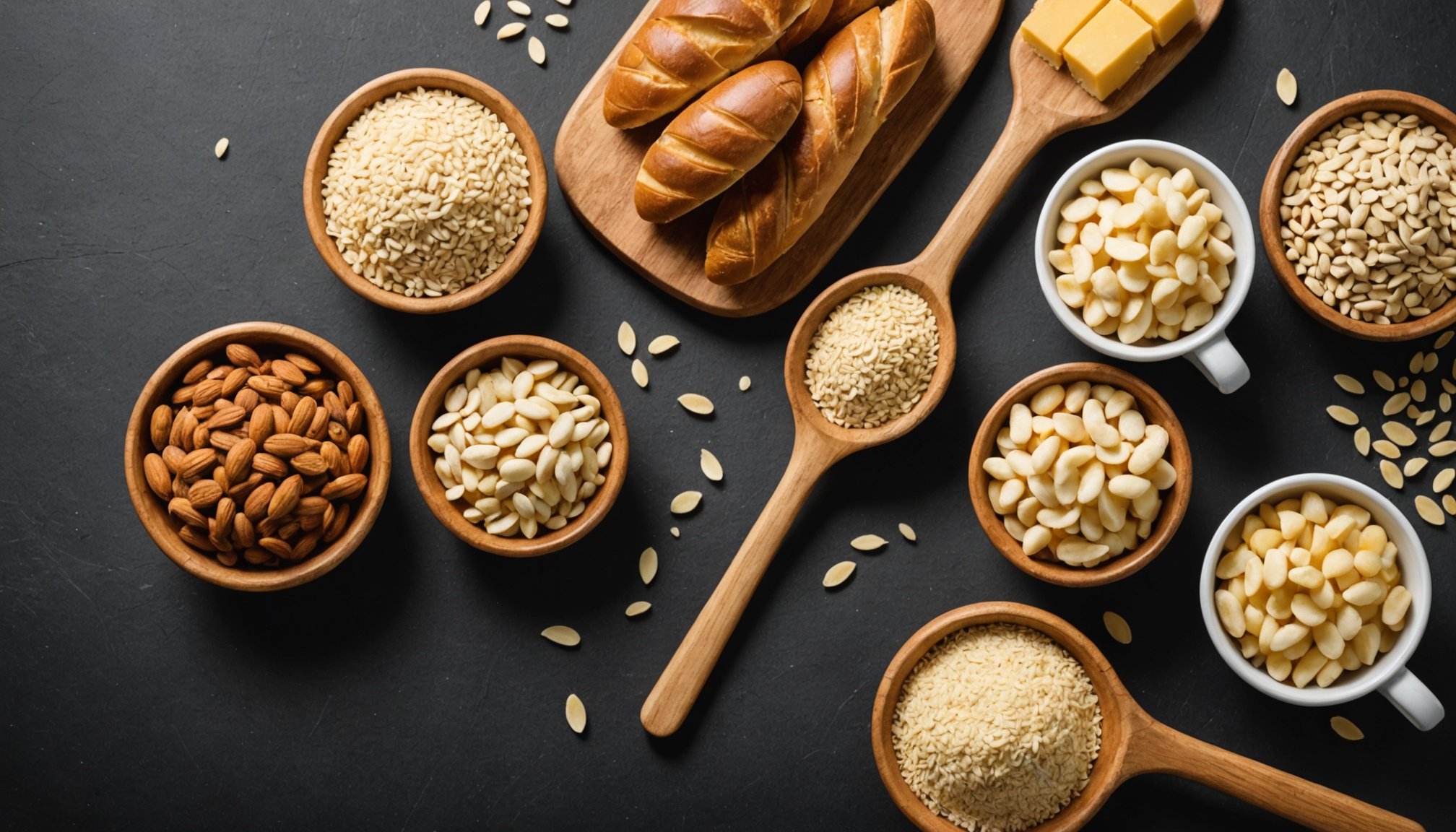Unlocking Athletic Potential: The Impact of Gluten-Free Diets on Performance and Recovery in Sports
Understanding Celiac Disease and Gluten-Free Diets
For athletes, maintaining optimal health and performance is crucial, and nutrition plays a pivotal role in this endeavor. One aspect of nutrition that has gained significant attention, particularly for athletes with specific dietary needs, is the impact of gluten-free diets. Celiac disease, a chronic condition affecting about 1 in 100 people, is characterized by an abnormal immune reaction to gluten, leading to inflammation and damage in the gut tissue. This condition can cause symptoms such as abdominal pain, bloating, and other gastrointestinal issues that can significantly hinder athletic performance[3].
The Role of MRI in Studying Gluten-Free Diets
Recent studies, such as the MARCO study led by Professor Luca Marciani from the University of Nottingham, have utilized magnetic resonance imaging (MRI) and gut microbiome analysis to understand how a gluten-free diet affects individuals with celiac disease. This study involved 36 newly diagnosed patients with celiac disease and 36 healthy volunteers. The patients followed a gluten-free diet for one year, and their gut function and microbiota were monitored using MRI and stool samples.
Also to see : Uncover effective drug-free strategies to manage chronic pain naturally
The findings were intriguing: after one year on a gluten-free diet, the patients showed improvements in gut symptoms, bowel water, and gut transit, although these metrics did not return to normal values. However, the diet also reduced some of the beneficial bacteria, such as Bifidobacteria, which are associated with the intake of starch and wheat nutrients. This reduction highlights the complex impact of gluten-free diets on the gut microbiome[1][3].
Impact on Athletic Performance
For athletes, the impact of a gluten-free diet can be multifaceted. Here are some key points to consider:
Also read : Unlocking the pros and cons of smart inhalers: a comprehensive guide to enhanced asthma management
Energy and Endurance
- Carbohydrate Sources: Athletes often rely on complex carbohydrates for sustained energy. While gluten-free diets can include foods like oats, potatoes, beans, lentils, quinoa, and rice, it is crucial to ensure these sources are nutrient-dense to support high levels of physical activity[4].
- Example: A pre-workout snack could be oatmeal with almond butter and berries, providing complex carbs and healthy fats for sustained energy.
Protein Intake
- Muscle Recovery: Protein is essential for muscle repair and recovery. Athletes on a gluten-free diet need to ensure they are getting enough protein from sources like lean meats, fish, tofu, legumes, and dairy or dairy-free alternatives.
- Example: A post-workout snack could be a protein smoothie with spinach, banana, and Greek yogurt, or a chicken and veggie wrap in whole wheat-free wrap, providing a protein-carb combo to aid in muscle repair and replenish glycogen stores[2].
Hydration and Electrolytes
- Balanced Hydration: Proper hydration is vital, especially during intense exercise. Foods rich in potassium, magnesium, and sodium, such as bananas and coconut water, help maintain electrolyte balance.
- Example: Drinking coconut water immediately after a workout can quickly replenish fluids and electrolytes.
Practical Insights and Actionable Advice
Meal Planning
- Balanced Meals: Ensure meals are nutrient-dense, including carbohydrates, fiber, protein, and fats. For example, a breakfast could be a berry cottage cheese bowl, providing protein and fiber to kickstart the day[2].
- Snacking: Opt for quick-digesting snacks like bananas or smoothies to fuel up without heavy digestion demands.
Hydration Tips
- Stay Hydrated: Drink water before, during, and after workouts. For longer workouts, include potassium and sodium-rich foods to replenish lost electrolytes.
- Example: Include coconut water in your hydration routine to maintain electrolyte balance.
Listening to Your Body
- Adjust Portions: Adjust portion sizes and snack frequency based on your energy needs and how you feel.
- Diversify Meals: Keep meals interesting by trying new recipes and incorporating a variety of colorful vegetables, grains, and proteins.
Table: Post-Workout Snack Examples
| Snack | Calories | Why It Works |
|---|---|---|
| Protein Smoothie (spinach, banana, Greek yogurt) | ~250 kcal | Protein supports muscle repair, while banana and yogurt replenish glycogen stores. |
| Chicken and Veggie Wrap in Whole Wheat-Free Wrap | ~300 kcal | Provides lean protein and complex carbs for muscle recovery and satiety. |
| Cottage Cheese with Pineapple | ~180 kcal | Cottage cheese has casein protein for prolonged recovery. Pineapple adds carbs and anti-inflammatory enzymes. |
| Hummus with Pita and Veggies | ~200 kcal | Hummus offers plant-based protein. Pita and veggies add fiber and essential nutrients. |
| Hard-Boiled Eggs with Toast | ~190 kcal | Eggs provide high-quality protein for muscle repair, and toast supplies replenishing carbs. |
The Importance of Gut Health
The gut microbiome plays a critical role in overall health and athletic performance. The MARCO study highlighted that while a gluten-free diet improves gut symptoms, it can also reduce beneficial bacteria. Here are some points to consider:
Prebiotic Treatments
- Reversing Negative Impact: The study suggests that prebiotic treatments could be developed to reverse the negative impact of gluten-free diets on the microbiome. This could involve supplements or specific foods that promote the growth of beneficial bacteria[1][3].
Correlation with Performance
- Gut Function and Microbiota: The imaging results from the study correlated with changes in the gut microbiota, indicating that gut health is closely linked to overall physiological functioning. Maintaining a healthy gut microbiome is essential for optimal athletic performance.
Quotes from Experts
- Professor Luca Marciani: “It was particularly interesting to see how the imaging results on gut function correlated with changes in the ‘bugs’ in the colon microbiota. The findings increase our understanding of gut function and physiology in celiac disease and open the possibility of developing prebiotic treatments to reverse the negative impact of the gluten free diet on the microbiome.”[1][3]
- Dr. Frederick Warren: “This study is the result of an exciting and innovative research collaboration bringing together medical imaging technology and gut microbiome analysis. We provide important insights which pave the way for future studies which may identify novel approaches to alleviate long-term symptoms in celiac patients.”[1]
For athletes, especially those with celiac disease or gluten intolerance, a gluten-free diet can be a double-edged sword. While it is essential for managing symptoms and recovering gut tissue, it also presents challenges in maintaining optimal nutrition and gut health. By understanding the impact of gluten-free diets through studies like the MARCO study, athletes and their nutritionists can make informed decisions to ensure they are fueling their bodies for peak performance.
Here are some final tips:
- Consult a Professional: Work with a Registered Dietitian Nutritionist and Sports Nutritionist to create an individualized meal plan that meets your specific needs.
- Monitor Progress: Use a food journal or app to track how different meals impact your energy, recovery, and overall performance.
- Stay Informed: Continuously update your knowledge on the latest research and nutritional guidelines to ensure you are making the best choices for your athletic career.
By combining the right nutrition, hydration, and recovery strategies, athletes on gluten-free diets can unlock their full potential and achieve their goals in their respective sports.

